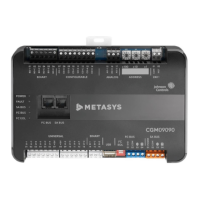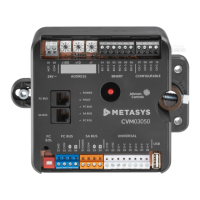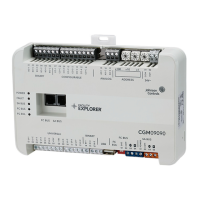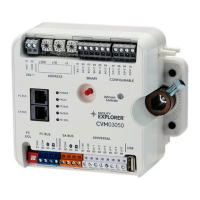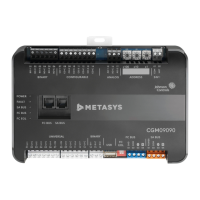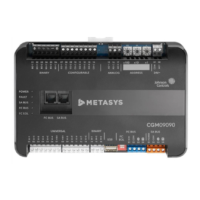CK721-A Installation and Operation CK721-A User Interface
24-10349-8 Rev. B 4-41
This document contains confidential and proprietary information of Johnson Controls, Inc.
© 2012 Johnson Controls, Inc.
NOTE
UDP broadcast typically does not span multiple Subnets unless the routers
are specifically configured to pass multicast traffic. Refer to the router
manufacturer for specific configuration details on enabling UDP traffic
passing.
Elevator Access Control
General Overview
The elevator access control gives you the ability to assign cardholders the access to
various elevators and floors in your facility, through their access groups.
Elevator readers cannot be overridden by a Local Cardholder Ov
erride or a Timed
Override, and do not allow the Auxiliary Access input to grant access to any floors.
Panel card events cannot be used on elevator readers.
Elevator access control supports terminal range 1 through 16.
NOTE
All elevator configurations within the same controller must use the same
elevator interface type.
The following elevator interface configurations are available:
Standard Low Level Interface
D620-ECG Low Level Interface
KONE HLI/KONE ELINK High Level Interface
KONE IP High Level Interface
OTIS E.M.S. - Security / B.M.S. Protocol High Level Interface
OTIS Compass High Level Interface
Standard Low Level Interface
Low level interface elevators have readers associated with a set of output points and
an optional set of input points. The field panel works with the elevator
manufacturer’s control system using output points to enable car-call buttons, and
input points to monitor car-call buttons.
The panel may grant access to a floor by enabling the corresponding car-call button
when a
badge is presented at a reader installed in the elevator cab.
An elevator cab must be equipped with one reader, and
one output point needs to be
assigned to every floor button in the cab that needs to be enabled by the security

